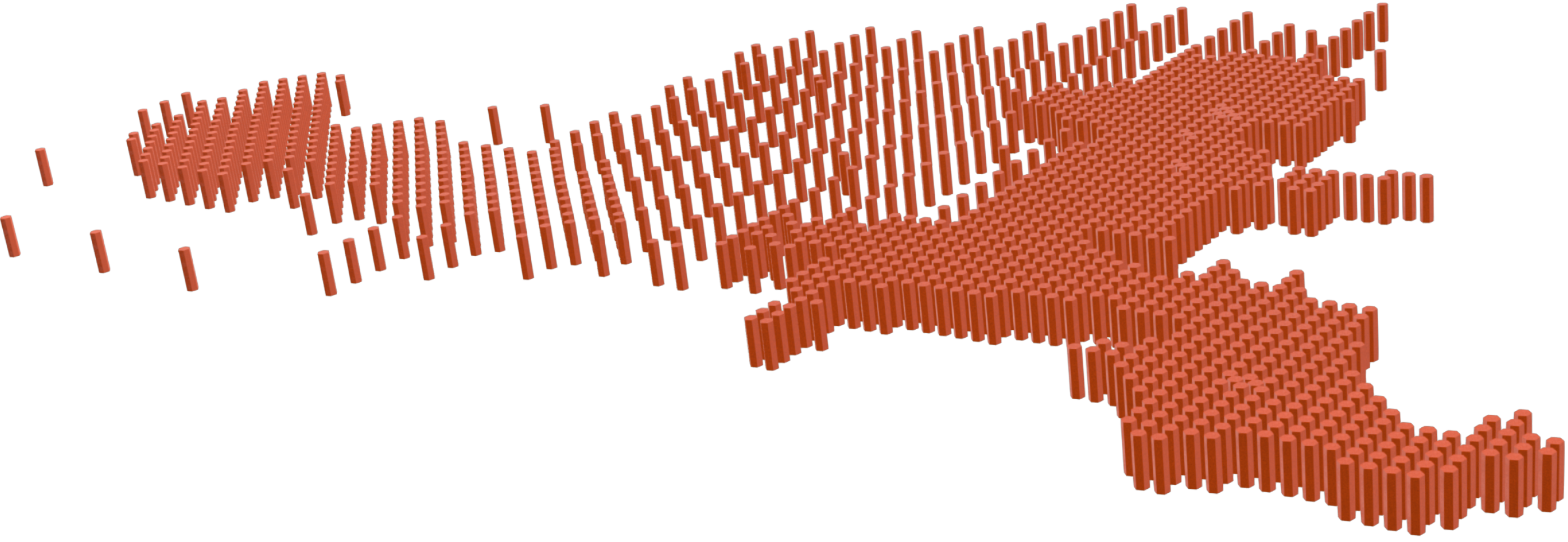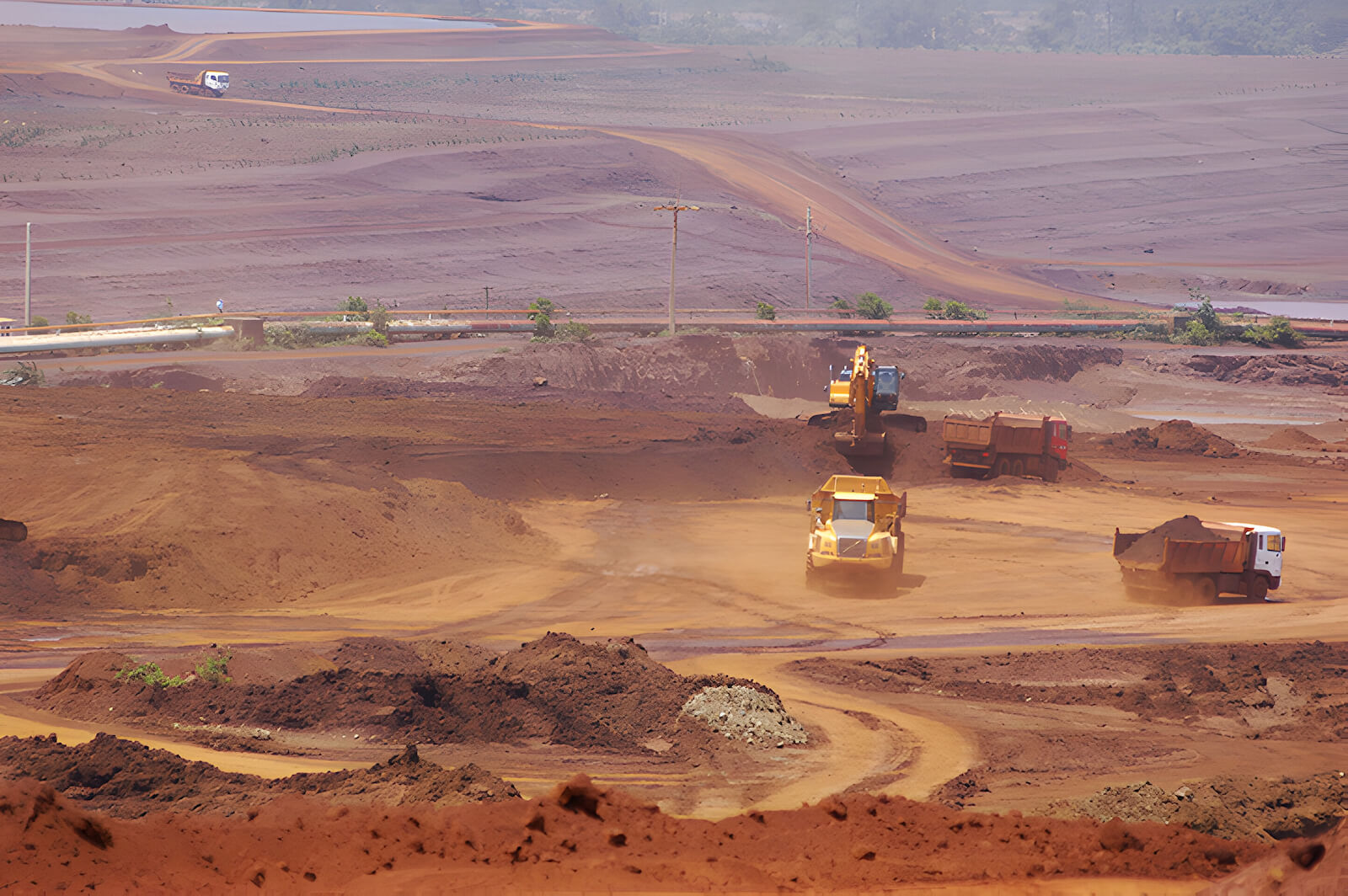
San Felipe Project
The project at a glance
The San Felipe Ni-Co laterite deposit is represented by a 23m thick laterite profile developed by tropical weathering of the underlying ultramafic basement rocks. The simplified deposit lithology represents overburden, limonite (higher Co grades), saprolite (higher Ni grades). The bulk of the San Felipe ore is composed of clay minerals of the smectite group. Saprolite ( high MgO, high SiO2) is the main ore-bearing horizon.
Total reported resources assign SF deposit to the best deposit in the world in the development stage.
| Resource | Resource Cut-Off 0.8% Ni | Resource Cut-Off 1.2% Ni | ||||||
|---|---|---|---|---|---|---|---|---|
| Mt | %Ni | %Co | %MgO | Mt | %Ni | %Co | %MgO | |
| Indicated | 117 | 1.27 | 0.05 | 8.8 | 60 | 1.49 | 0.05 | 9.2 |
| Inferred | 189 | 1.26 | 0.05 | 8.4 | 85 | 1.59 | 0.06 | 8.8 |
| Total | 3.5 | 1.26 | 0.05 | 8.6 | 146 | 1.55 | 0.06 | 9.0 |
| 38% Indicated, 62% Inferred | 42% Indicated, 58% Inferred | |||||||
About the laterite deposit
The deposit on which the technology research is being carried out is considered unique in the context of its composition. In addition, the comparative advantage of the deposit is that it is close to the surface and the raw materials can be mined in opencast mines at relatively lower costs than underground mining. The deposit also contains a number of concomitants which are also significant in terms of supply to the EU.
It is worth noting that the mining at San Felipe in Camaguey is considered one of the most important mining projects in Cuba.
| Schematic Laterite Profile | Approximate Analysis (%) | Extraction Process | |||
|---|---|---|---|---|---|
| Ni | Co | Fe | MgO | ||
| <0,8 | <0,1 | >50 | <0,5 | Acid Leach Acid Leach | |
| Limonite | 0,8 to 1,5 | 0,1 to 1,2 | 40 to 50 | 0,5 to 5 | Caron Process |
| Transition | 1.5 to 4 | 0.02 to 0.1 | 25 to 40 | 5 to 15 | Smelting |
| 1,8 to 3 | 10 to 25 | 15 to 35 | |||
| Saprolite | 0,3 | 0,01 | 5 | 25 to 45 | |
The mineralogical composition and distribution of SF laterite shows that the processing of the whole laterite profile of the deposit is very complicated. According to previous experiences, only heap leach technology can treat the entire ore body. Improving the lower recovery of heap leach by using a bioleaching approach promises to make Ni-Co laterite extraction economically feasible while also reducing CO2 emissions and energy usage.
History of mining in Cuba
Cuba has a long history of nickel and cobalt production, which dates back to the 1940s.
In 1943, during World War II, a U.S. company built the first nickel plant on the island in Nicaro, municipality of Mayarí in Holguín province, which operated until 2012. Pioneer in the use of CARON Technology. Later on, in 1955, the North American company Freeport Sulphur Corporation, began the construction in Moa, Holguin province, of the second Cuban plant for the exploitation of nickel. This factory, which began production in 1959, would also use, for the first time, the pressurized acid leaching technology (HPAL). Since 1994, Moa Nickel S.A. has been a joint venture company.In 1987, in cooperation with the USSR, the third factory began operations in Punta Gorda, Moa municipality, with the capacity to produce 30,000 tons of metal content per year. It uses CARON technology.
The Cuban government has made nickel and cobalt production a priority by investing heavily in the industry and developing new mines and processing facilities. Today, Cuba is one of the world’s leading producers of nickel and cobalt, with exports of the metals accounting for a significant portion of the country’s foreign exchange earnings.
